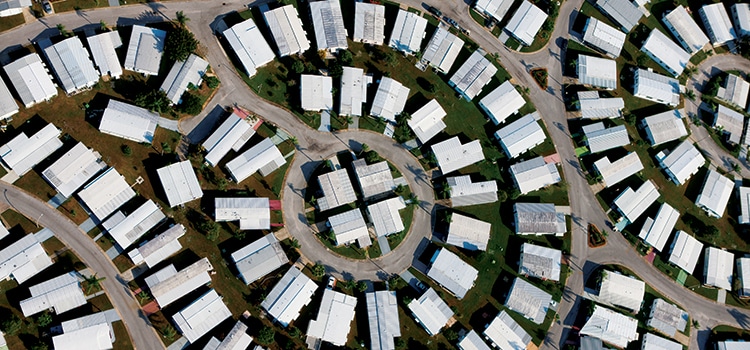By Victoria Scarborough, Ph.D., The ChemQuest Group
The need for energy-efficient buildings has never been higher or more important, and coatings can play a major role in maintaining their efficiency. Since the 1980s, Earth’s average temperature rose more than 2 degrees Fahrenheit. According to the National Aeronautics and Space Administration, 2020 was the hottest year on record, tying the previous record from 2016. As a result, the United States is experiencing prolonged droughts, more frequent and intense storms and floods, and unprecedented forest fires.
Our energy infrastructure has come under tremendous strain with regular blackouts, as more energy is directed from the grid to the built environment as thermostats adjust for extended temperature extremes. Beginning in 2016, the U.S. Department of Energy (DOE) developed a strategic plan to improve the energy efficiency of homes, buildings, and industries. After working with the National Institute of Building Sciences and a broad group of market stakeholders, the DOE developed a set of national zero net energy (ZNE) building standards.
DOE states, “ZNE buildings combine energy efficiency and renewable energy generation to consume only as much energy as can be produced onsite through renewable resources over a specified time.” Typically, a ZNE building uses a combination of active renewable energy sources, such as solar panels, in combination with a passive energy-conserving building envelope to comply with the standards.
Federal government agencies and state and local governments have begun to establish targets for ZNE buildings. Private commercial property owners have a growing interest in developing ZNE buildings to meet their corporate sustainability goals and comply with certain near-future regulatory mandates.
The state of California has developed an Energy Efficiency Strategic Plan with the goal of achieving ZNE buildings. According to the plan, all new residential construction shall be ZNE in 2020. All new commercial construction will be ZNE by 2030. Half of all commercial buildings must be retrofit to ZNE by 2030, while half of new major renovations of state buildings must be ZNE by 2025. Oregon, New York, Colorado, and Washington state have similar plans in development, as well as other municipalities throughout the United States.
The ZNE construction market is large and complex and includes architects, building developers, general contractors, subcontractors, energy raters, utility companies, property managers and owners, as well as high-performance building suppliers who actively seek new energy-saving products specifically for this market. While there has been pushback from some builders who believe ZNE compliance will reduce their profits, there are a growing number of ZNE-specific builders who hope to gain higher profits ahead of those who lag in accepting these regulatory changes. The Home Energy Rating System (HERS) Index is the industry standard by which a home’s energy efficiency is measured and its software programs consider multiple factors, including construction materials, to produce a HERS score for a home.
In 1998, Leadership in Energy & Environmental Design (LEED) criteria were established to help save building energy, but they did not specifically measure energy performance. In contrast, ZNE-mandated requirements establish measurable goals. Energy-saving paints and coatings play a major role in reaching ZNE compliance by facilitating lower HERS scores when applied to the building envelope.
Existing cool-roof coatings can reduce internal building temperatures by including thermal-modulating paint additives. Heat-resistant/reflective exterior wall paints as well as attic barrier coatings can also contribute to lowering building energy demands. However, it is important to emphasize that while coatings already exist for thermal management, they must be re-evaluated for compliance to ZNE building targets.
Understanding how much energy these coatings can save is critical to their success in meeting these goals. To determine the energy efficiency of coatings on buildings, several organizations provide testing services, including the National Energy Renewable Laboratory, Lawrence Berkeley National Laboratory, and the Building Technologies Research and Integration Center at Oak Ridge National Lab. Innovation is needed right now to help our infrastructure meet the critical demands of the growing ZNE market. The coatings industry and, specifically, energy-saving coatings, must be a part of that solution.
MARCH 2021 | Vol. 18, NO. 3
